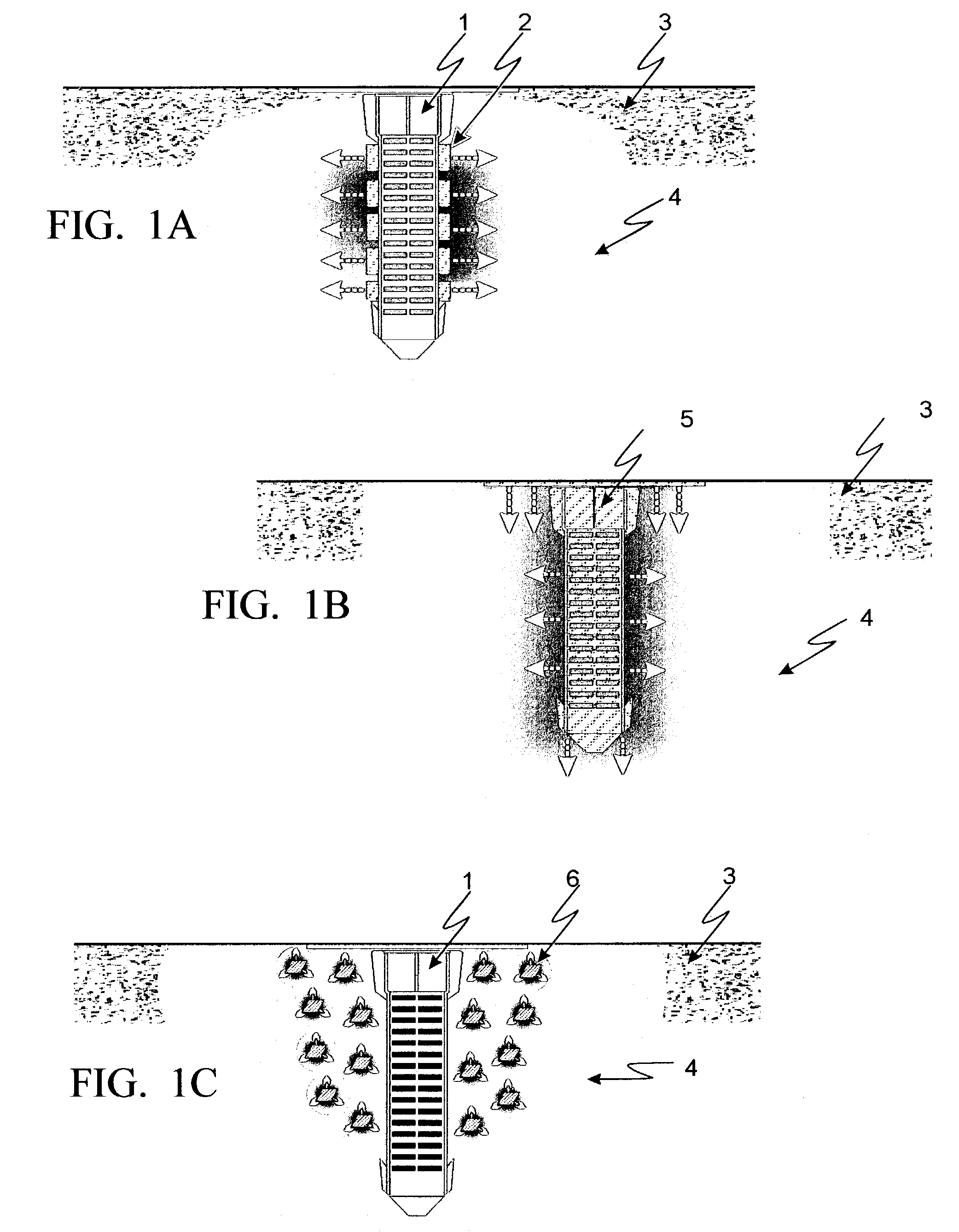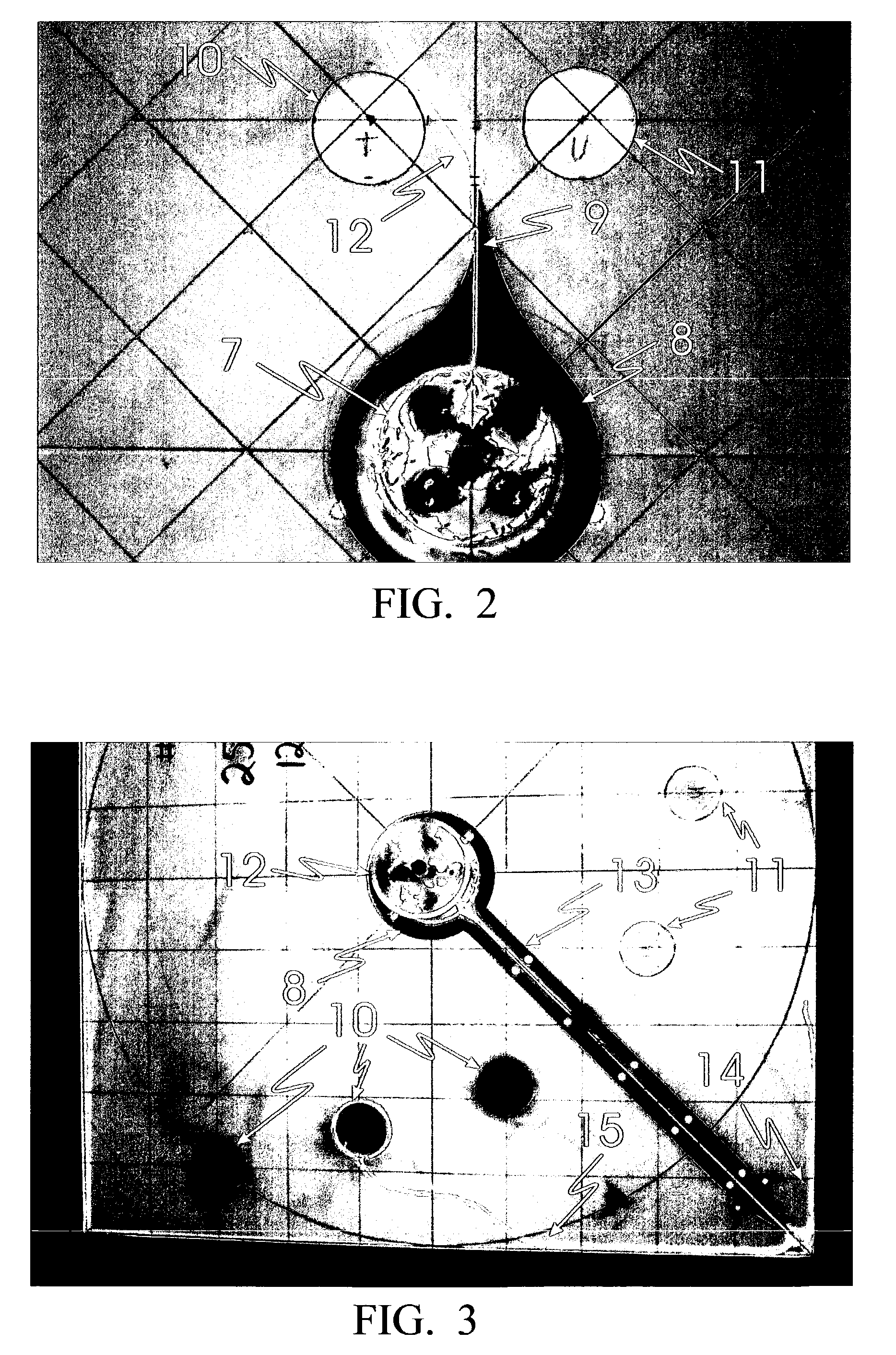Semiochemical reservoir to attract subterranean termites tunneling in soil
a technology of subterranean termites and reservoirs, which is applied in the direction of instruments, paints with biocides, drug compositions, etc., can solve the problems of increasing the feeding of termites, unable to demonstrate true “attraction, and the use of decayed or fungus-inoculated wood to attract termites is not satisfactory for commercial use, so as to achieve greater water-solubility
- Summary
- Abstract
- Description
- Claims
- Application Information
AI Technical Summary
Benefits of technology
Problems solved by technology
Method used
Image
Examples
example 1
Preparation of Fungi Decay Extract
[0058]Spruce (Picea sp.) boards (13 by 8 by 0.5 cm) were inoculated with brown-rot fungi, Gloeophyllum trabeum, and stored at 25° C. and >90% relative humidity for 1–2 months, during which the wood weight loss due to fungal decay exceeded 50%. The decayed wooden boards were soaked in an acetone solution for >48 hrs, and the acetone extract was condensed at room temperature to yield the desired concentration.
example 2
[0059]The biological activity of the extract was first tested in a petri dish (9 cm diameter and 1 cm high). Two pieces of filter papers (Whatman No. 1, 9 cm diameter) were cut in half and placed side-by-side together in the petri dish without touching each other. One half of the paper received acetone solution of the extract, the other received acetone only. Upon the evaporation of the acetone, both filter papers were moistened with deionized water. Twenty field-collected termites (Coptotermes formosanus) were placed in the dish and the numbers of termites present on each filter paper piece were counted 1–2 minutes later. The test was repeated six times. As shown in Table I, most termites preferred to aggregate on paper treated with acetone extract of fungi decay wood than acetone control, indicating the “arrestant” property of the decay extract.
[0060]
TABLE IMean numbers of termites (of the 20 termites) found on a filterpaper in a petri dish choice test, number ...
example 3
Impregnation of Polymer Disc with Fungi-decay Wood Extract
[0061]Polymer discs (3.6 cm diameter) were cut out of a meltblown polypropylene fiber sheet. Acetone solution of fungi-decay wood extract was pipetted onto each disc to yield a concentration (wt / wt) four times higher than those present in fungi decay wood. Control discs were treated with acetone only. The impregnated polymer discs were air dried for 24 hrs before testing.
PUM
| Property | Measurement | Unit |
|---|---|---|
| diameter | aaaaa | aaaaa |
| diameter | aaaaa | aaaaa |
| diameter | aaaaa | aaaaa |
Abstract
Description
Claims
Application Information
 Login to View More
Login to View More - R&D
- Intellectual Property
- Life Sciences
- Materials
- Tech Scout
- Unparalleled Data Quality
- Higher Quality Content
- 60% Fewer Hallucinations
Browse by: Latest US Patents, China's latest patents, Technical Efficacy Thesaurus, Application Domain, Technology Topic, Popular Technical Reports.
© 2025 PatSnap. All rights reserved.Legal|Privacy policy|Modern Slavery Act Transparency Statement|Sitemap|About US| Contact US: help@patsnap.com



